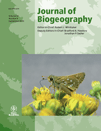Patterns of population genetic diversity in riparian and aquatic plant species along rivers
Abstract
Aim The downstream hydrochoric spread of seeds of aquatic and riparian plant species, without upstream compensation, can be expected to result in downstream accumulation of population genetic diversity. This idea has been termed the ‘unidirectional dispersal hypothesis’ and is the genetic equivalent of the more generally known ‘drift paradox’. Our aim was to test this unidirectional diversity hypothesis, and to present a general synthesis of the patterns of population genetic variation across different riparian and aquatic plant species along rivers.
Location The Meuse River (Belgium) and rivers world-wide.
Methods First, we used amplified fragment length polymorphism markers to compare patterns of within- and between-population genetic diversity among three riparian plant species (Sisymbrium austriacum, Erysimum cheiranthoides and Rorippa sylvestris), typically occurring in different habitats along a gradient perpendicular to the Meuse River. Second, we performed a meta-analysis on studies reporting on the population genetic structure of riparian and aquatic plant species along rivers.
Results Along the Meuse River, we found significant genetic differentiation among populations of all three riparian species, and significant isolation by distance for one of them (R. sylvestris). There was no clear association between the typical habitat of a species and its population genetic structure. None of the three species provided evidence for the unidirectional dispersal hypothesis. The meta-analysis, based on 21 data records, did not support the unidirectional dispersal hypothesis either. Average weighted population genetic differentiation across species was significant.
Main conclusions Important mechanisms of upstream seed dispersal, probably through zoochory, together with higher seed recruitment opportunities in upstream habitats due to density dependence of recruitment, may explain the absence of downstream accumulation of genetic diversity. Also, it seems difficult to find consistent patterns in genetic variation in species from aquatic and riparian habitats. We argue that this is due to the recurrent extinctions and colonizations characteristic of these habitats, resulting in complex genetic patterns. Our results strongly support previous suggestions that stream ecology should consistently embrace metapopulation theory to be able to understand patterns of genetic diversity, as well as species diversity.




